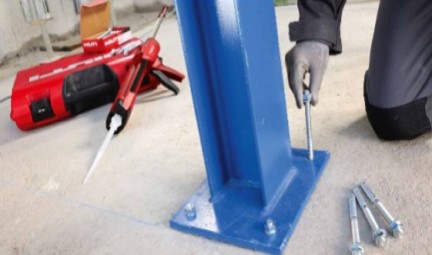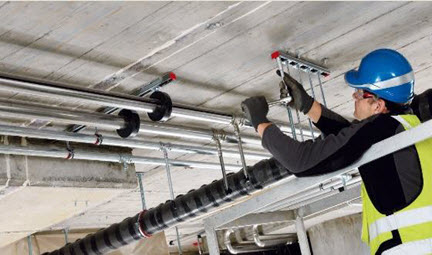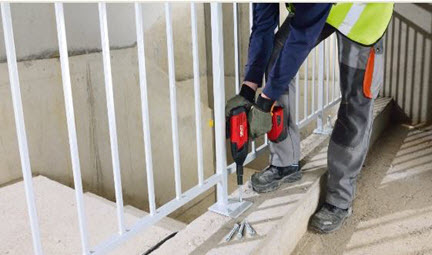HOW TO DESIGN, INSTALL AND CHECK ANCHOR SYSTEMS
Hilti’s solutions, products, software and services for fastenings
Whether you are fixing a small handrail or fastening a
façade onto one of the world’s tallest skyscrapers - then at Hilti we offer a wide
range of anchor systems to help.
We have more than 60 years’ experience developing
anchors and fastenings. We also offer back up services to help with design,
training, onsite testing and consultation - worldwide.
We’ve designed particularly robust and specialist products, such as:
Our Hilti
anchor systems with Hilti SafeSet Technology – which self cleans or eliminates
the need for cleaning holes almost entirely.
Our Hilti
HAC – a new generation of cast-in anchor system with an innovative V-form
helping to prevent voids and air pockets.
Our Hilti
PROFIS Engineering and Anchor – code compliant to make your fastening design
easier and quicker.
For more information, contact your local Hilti team for more information. We’re always happy to help onsite, online or on the phone.
WE DESIGN PRODUCTS THAT HELP MITIGATE THE ADVERSE CONDITIONS THAT IMPACT PERFORMANCE OF ADHESIVE ANCHORS
| Temperature | Hole
drilling and cleaning | Moisture
condition |
| Adhesives should perform in a wide range of temperatures with reasonable
work and cure times. | Simple
installation methods help result in reliable performance | Wet
concrete shouldn’t inhibit work in the office or on the jobsite |
Two-part adhesive anchors cure due to a chemical reaction between the hardener and the resin. This reaction will accelerate or decelerate depending on the temperature of the base material. Cure times, work times, and conditioning steps that vary with temperature should be referenced in the Manufacturer’s Printed Installation Instructions (MPII). Base material temperature and adhesive anchor systems may impact a project in the following four ways: The range of base material temperatures at the time of
installation The time required for the adhesive anchor to cure
(cure time) The time permitted to install an adhesive anchor
(working time or gel time) Conditioning requirements of the adhesive cartridge | Hilti’s SafeSet System was developed to help simplify the hole cleaning steps by using either: 1.A hollow-drill
bit and vacuum system that removes dust and debris during the drilling process
2.A proprietary anchor element, such as a Hilti HIT-Z rod, which requires no hole cleaning prior to install . .
| When adhesives are installed into the base material holes, they form a bond with the base material to transfer load from the anchor element. The presence of water can affect adhesion to the base material. Anchors can be tested to varying moisture conditions, including dry concrete, water-saturated concrete, water-filled concrete, and submerged concrete. Each product’s ICC-ES report includes ɸ -factors derived from testing in these conditions. While adhesive anchor systems are generally more sensitive to increased
adverse conditions, some perform reliably regardless of whether the base
material meets the definition of dry concrete – that’s concrete that has not
been exposed to moisture for at least 14 days. Whether your design assumes dry
or water-saturated concrete, Hilti helps ensure your adhesive anchors perform
reliably and reduce reliance on ideal jobsite conditions by maintaining the
same ɸ-factor for both dry and water-saturated moisture conditions. . . . . |
TYPICAL APPLICATIONS FOR ANCHORS AND FASTENING SYSTEMS
How to fasten base plates, handrails and ceiling supports
At Hilti we make a wide range of fastenings including mechanical anchors, removable screw anchors, epoxy and hybrid adhesive anchors.


